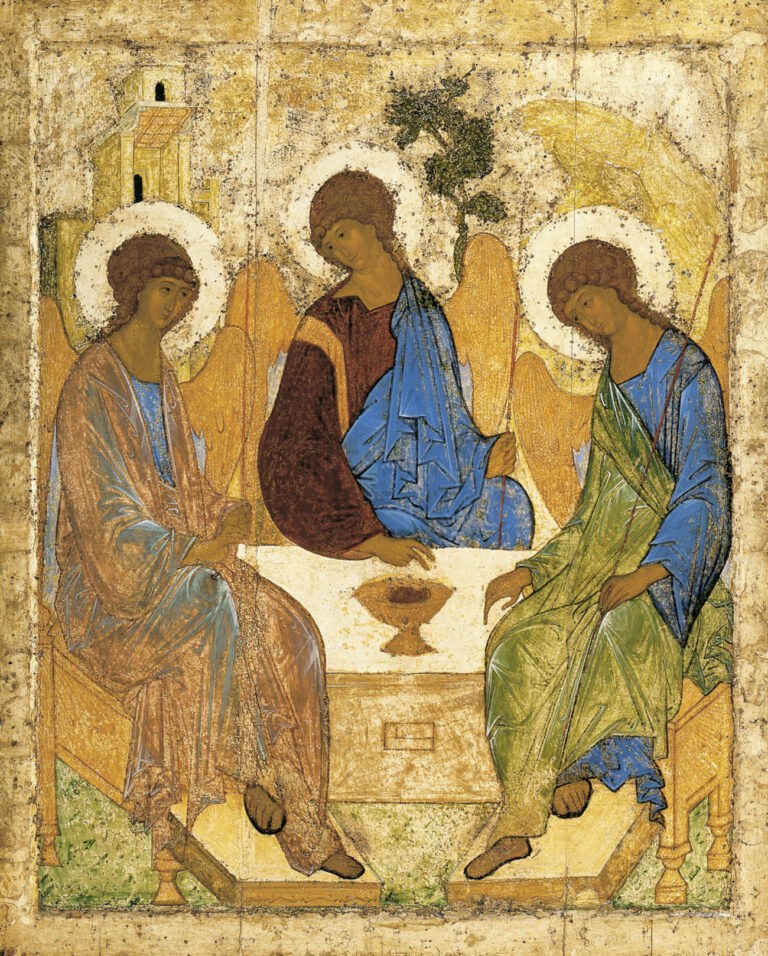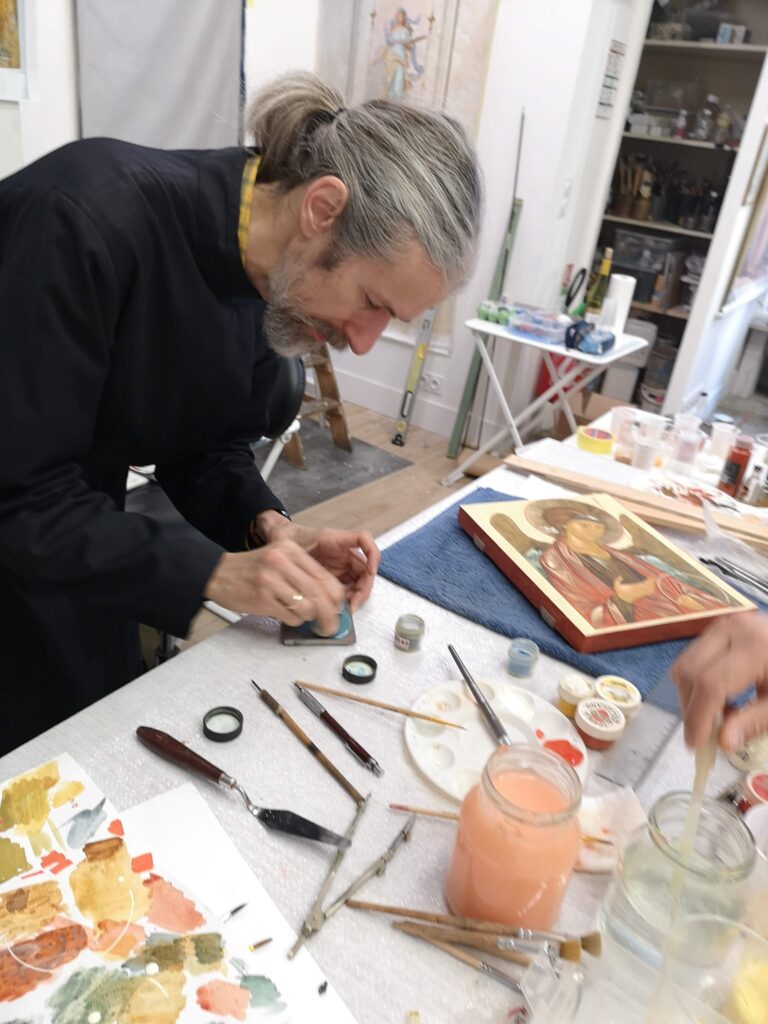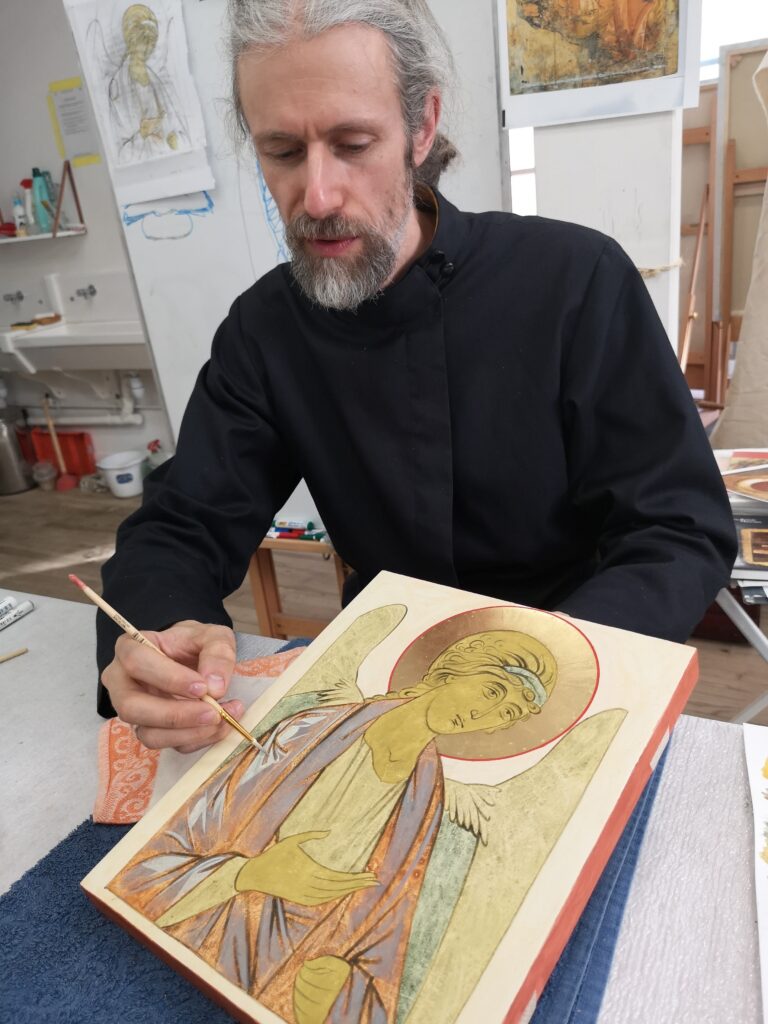6th May 2022
The ancient practice of Iconography
Rev. Nikita Andrejev talks about this original tradition of Christian sacred art, which has been integral to the spiritual life of Christians since apostolic times.
Is Icongraphy primarily a religious practice in former times? When did it become available to lay people & even those not allied to a Christian tradition?
We know very little concerning the identities of the ancient iconographers. Some of them were monks with a high level of spiritual life, like St Andrei Rublev who painted the famous Trinity, and St. Alipiy of the Kiev Caves. But whatever their background, at least on some level the painting would require entering into a relationship with the saints depicted, with the dogmas and tenets of the faith. Icons on display in churches were by definition designed for lay people’s appreciation.
This is all the more the case in our own times, where icons can be enjoyed as works of art but have an appeal that goes beyond superficial beauty and technical skill. There is a general hunger for spirituality in the West and the rediscovery and appreciation of the Eastern Church’s Orthodox iconography is very much part of this. An icon is at base a spiritual portrait, suggesting the mystery of the divine – yet whatever one’s beliefs, what could be more universal than a simple yet attentive depiction of a human face?
How did you come to learn the skill of iconography?
I learned the skill of icon painting from my father. As a child, I watched him both painting and teaching in his studio. Icons were at the centre of his life; not just professionally and spiritually, but socially, too – both my parents enjoyed entertaining his students to meals and to an annual ‘open house’.
I loved the sense of peace, of safety, in his studio, but I also enjoyed learning the practical skills of how to draw, to paint, and this gradually developed into assisting him with aspects of creating the icons he worked on. As a teenager I would accompany him to summer workshops, acting as his translator, but by then I had already realised that my future was as an artist, creating icons and teaching iconography.
Are you an Iconographer who teaches or an Iconography teacher who paints icons? What is the relationship between your Iconography practice and your role as an iconography teacher?
The two spheres of painting and teaching certainly feed into each other. I teach based on the experience of my own painting, but many times it’s when in a workshop that I’m better able to test out or implement a ‘plan’ for a given stage of the painting, say a certain colour combination. Perhaps because in a class, where many students are painting one and the same subject, you have the chance to see one and the same plan, the same paint combinations, unfold in ten or twenty very different ways! You can see the limits of what is possible, the potentials as well as the difficulties.
Perhaps more importantly, though, when taking a workshop you have to be very focussed, very time-conscious. You are responsible for other people, and this is always a challenge, but also an opportunity to grow, by observing and learning from others. So from one perspective, workshops are very good for the teacher! Whatever the balance between my role as painter and teacher, I don’t see myself as a fount of knowledge – as iconographers we are all at various stages of learning…
Deacon Nikita Andrejev is an iconographer and instructor based in Estonia, belonging to the Prosopon School of Iconology.
He will be teaching the CHC’s course on Ancient Byzantine Iconography in June 2022.




